Could Podcast Audience Growth Follow The Same Pattern As Online Audio Streaming?
They say history is the best predictor of the future. If that’s true, can the growth trajectory of podcasting be predicted by historical adoption patterns of online audio streaming?
In 1998, the long-running Edison Infinite Dial study started at Arbitron. The study was inspired by Audio.net, which became Todd Wagner and Mark Cuban’s Broadcast.com company, one of the first to stream radio stations on the internet. Arbitron’s goal in retaining Edison Research to conduct the first Infinite Dial study was to provide consistent data on consumer adoption of new entertainment platforms and technologies.
For more than 20 years, Infinite Dial, now presented by Triton and Edison, has depicted the growth of digital media. By looking at Infinite Dial’s history of streaming data, media decision makers can glean insight into what lies ahead for podcast audiences. Here are some key trends to pay attention to.
Early on, both streaming and podcasting had many years of slow but gradual growth
From 2003 to 2008, there was little growth in online audio streaming monthly audiences.
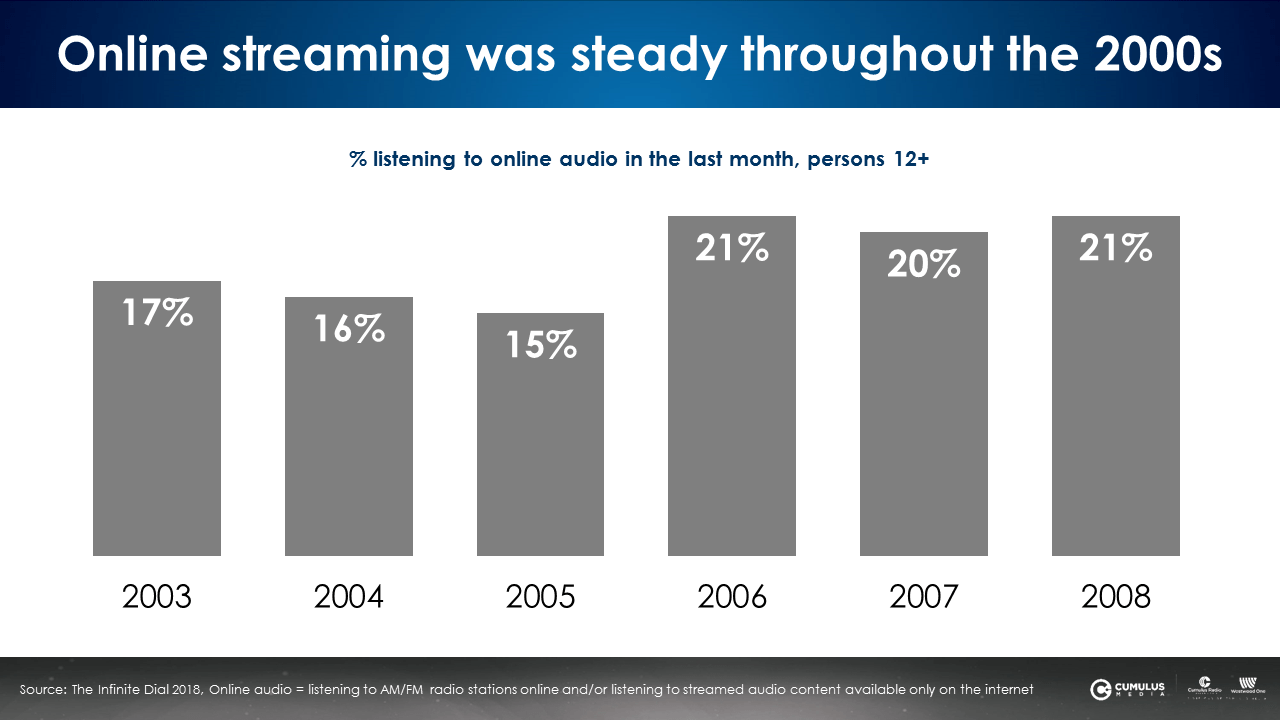
Similarly, podcasting also experienced a six-year period of tepid monthly audience growth from 2009 to 2014. In 2012, Edison made a change to the wording of the podcast question which explains the uptick that year and subsequent years.
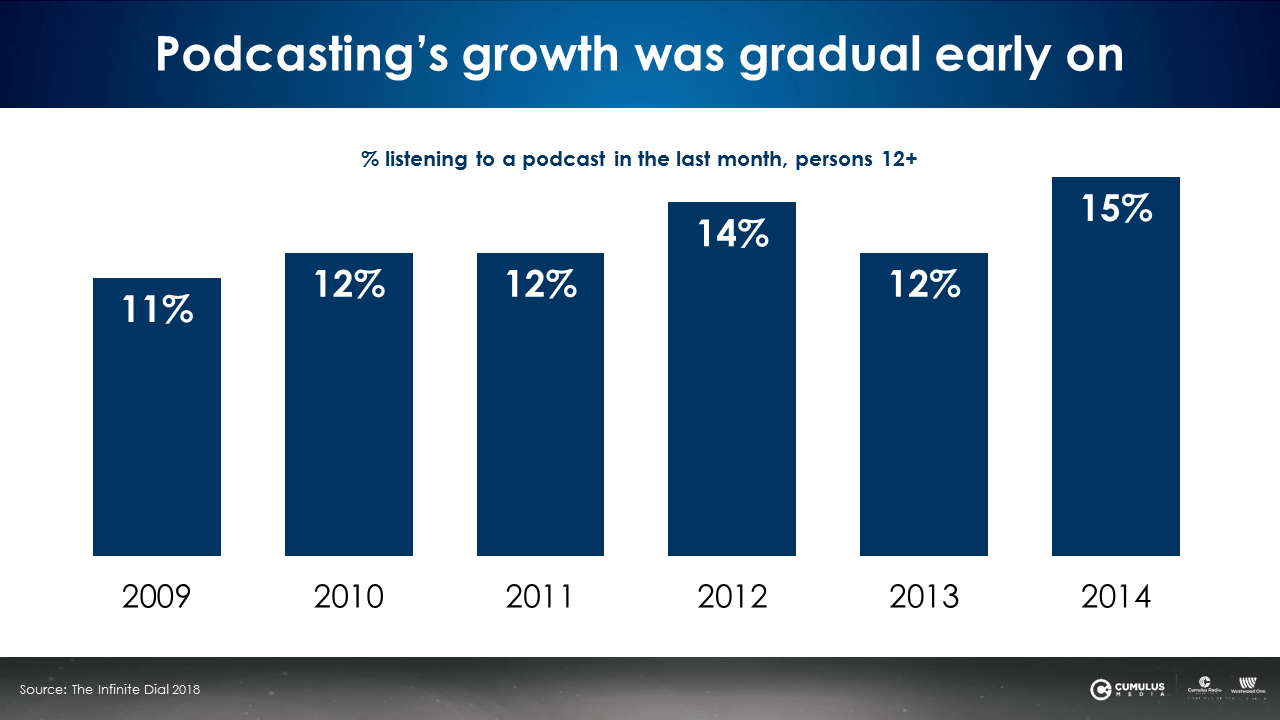
2010–2018: A decade of streaming audio audience growth with better content and faster distribution platforms
In 2010, 15 years after Broadcast.com started streaming radio stations online in 1995, online audio audiences began to take off. A number of factors propelled the audience surge:
- More people were using the internet
- The birth of the smartphone in 2007 meant listening could occur via mobile, not just on desktop
- Cellular distribution technologies transitioned from 2G to 3G and 4G, allowing better sound quality, speed, and more affordable data plans
- Streaming audio media firms sprung up and AM/FM radio stations started promoting their streams on-air
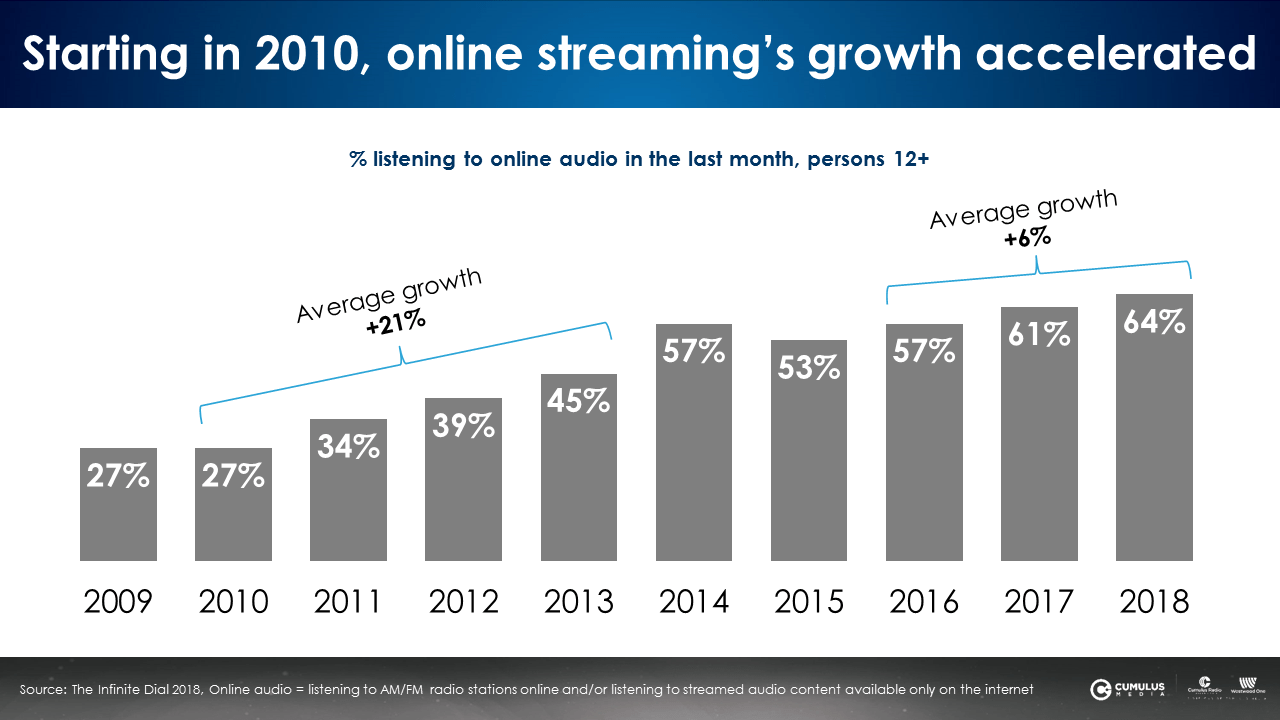
From 2010 to 2014, monthly audio streaming audiences grew an average of +21%. In 2015 and 2016, audiences flattened. Over the last two years, monthly streaming has grown an average of +6%.
Podcasting begins its own growth trajectory in 2014
Podcasting was born with the popularity of the iPod in 2004, but real monthly audience growth did not begin until 2014. Many credit the massive popularity of the podcast Serial from This American Life with the explosion of podcasting awareness and usage.
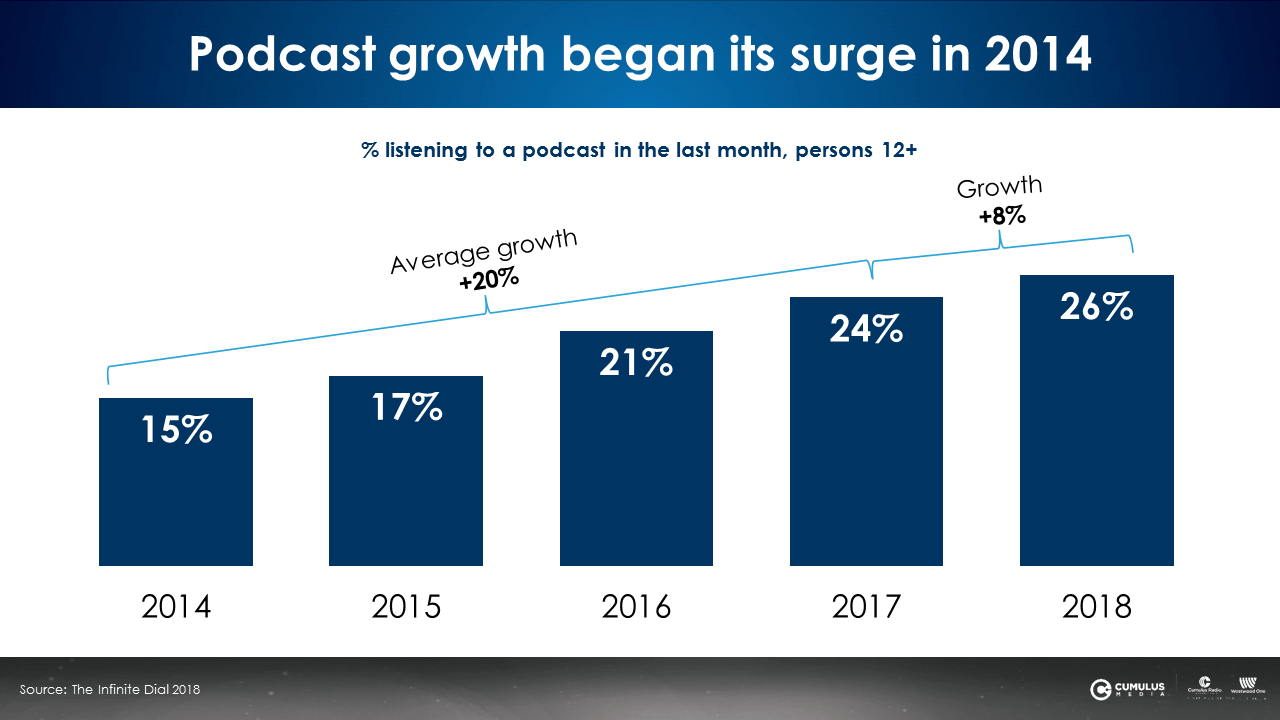
Podcasting’s upward climb continued from 2014 through 2017 with an average growth rate of +20%. Then from 2017 to 2018, growth moderated at +8% annually.
What does the future of podcasting hold? Continual upward audience growth
The history of streaming audiences included four years of blockbuster growth followed by years of stability and modest growth. Using streaming growth as a model, imagine three growth scenarios for podcasting:
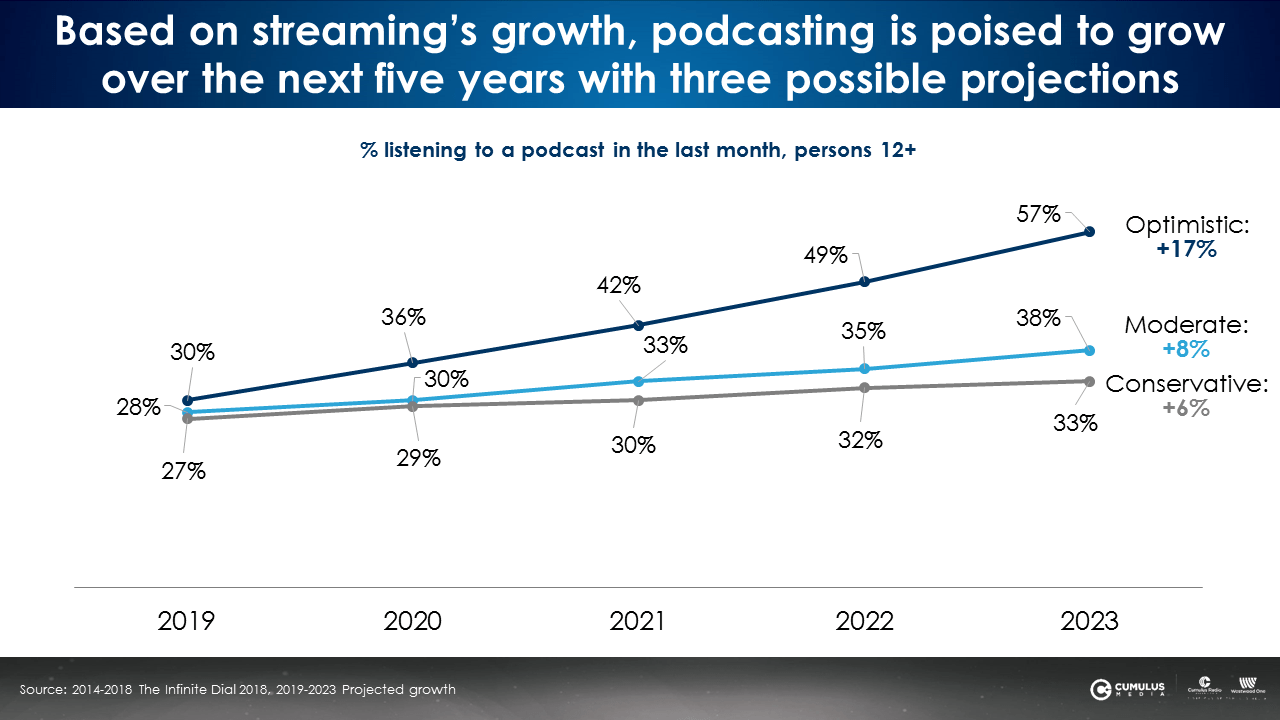
- Optimistic: Podcasting monthly audiences grow at +17% annually, the average growth rate of the last five years.
- Moderate: Assumes +8% annual growth, reflecting the growth patterns of the most recent years.
- Conservative: Monthly audiences projected to grow +6%, mirroring the same average growth rate of online streaming from 2016-2018.
Podcasts are used for learning and entertainment
Consider what content needs are being met by each audio source. A recent study by the IAB found that listening to music is a form of entertainment that helps people pass the time.
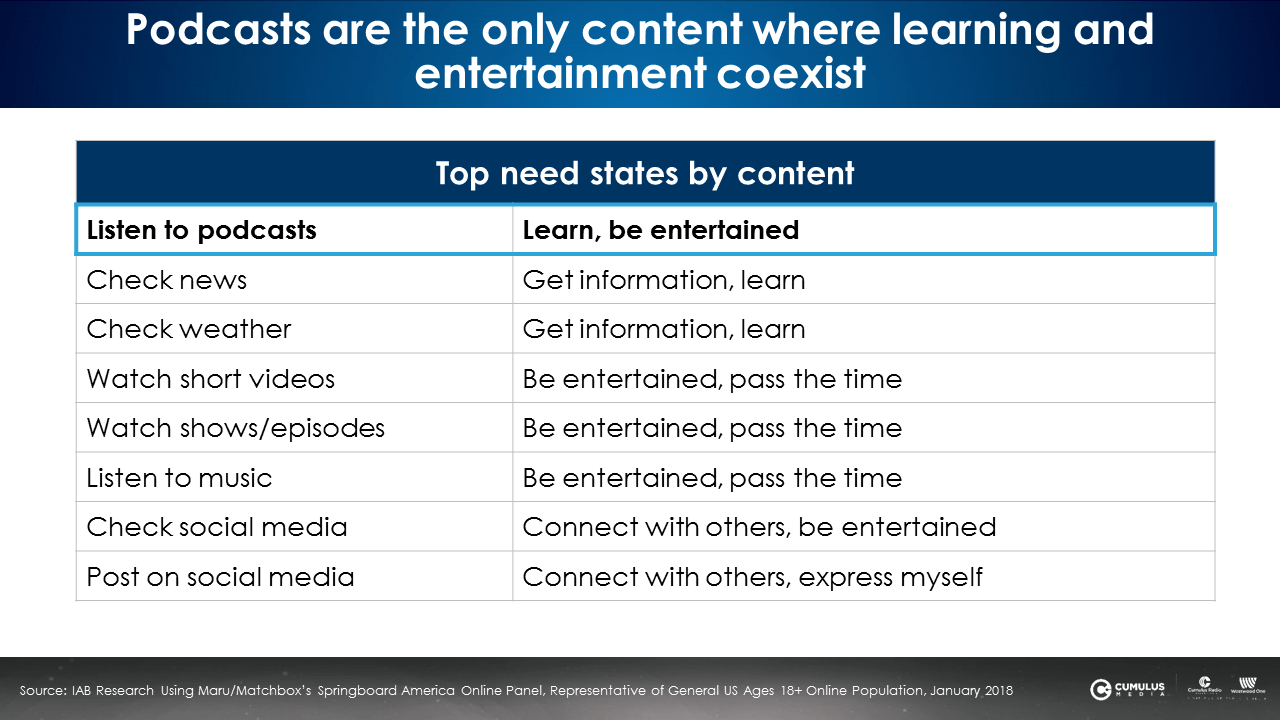
Podcasting satisfies a need for entertainment as well, but it is also the only content option where education is also an important facet of experiencing the medium. Podcast listening requires more concentration and requires greater attention, which supports a more conservative projection for consumer adoption.
The 20 years of trends from Edison’s Infinite Dial also reveal growth is never linear. Years of breakneck growth are often followed by years of plateaued audiences. Regardless of which growth scenario occurs, more advertisers are using podcasting and more great content is being created. Content discovery will improve and audiences will continue to grow.
Westwood One Podcast Network offers growing audiences diverse programming options
Following in the footsteps of streaming audio, podcasting is poised to grow as a major part of the American audio experience. There are more heavy podcast listeners than ever before, and the appetite for podcasts is growing. With our own Westwood One Podcast Network offering a portfolio of diverse content, Westwood One is ready to feed those expanding audiences.
Key takeaways:
- Early on, both streaming and podcasting had many years of slow but gradual growth
- 2010–2018: A decade of streaming audio audience growth with better content and faster distribution platforms
- Podcasting begins its own growth trajectory in 2014
- The future of podcasting will be positive with continued upward audience growth
- Podcasts are used for learning and entertainment
- Westwood One Podcast Network offers growing audiences diverse programming options
Pierre Bouvard is Chief Insights Officer at CUMULUS MEDIA | Westwood One.
Contact the Insights team at CorpMarketing@westwoodone.com.